Sustainability Research and Strategy
Hanne
Viehmann
# Sustainability Strategy # Circular Economy # Material Experiments # Collaboration
Circular Clay Teacup
The design project to support the attempt making India plastic free by replacing plastic teacups with the traditional ones made of clay. The focus lies on a development of a sustainability strategy and the outcomes are a concept to recycle the disposed off material and a collection of ceramics visualising the possibilities to revalue the waste fired clay.
The video shows the background and findings of the research project. I investigated the socio-cultural and environmental impact of the clay cup and combined these with insights about the users and the product. The design outcomes of the project are a comprehensive research report and a series of material experiments that visualise the potential and value of recycled clay.
Collaboration: research photos made by Amitava Saha, pottery by Markus Paulus and the product stills by Jule Breiert.
Content
Product and material analysis »
Development of a concept to close the cup's life cycle »
Material and design experiments »

Bhar [baːɐ̯]
The cup is a disposable teacup made of low-fired clay and used at street tea stands in India since many generations. It have had gradually given way to plastic and paper cups in the last decades.
Now, Indian Railway Ministers announced to utilise the clay cups to defeat plastic waste at train stations.
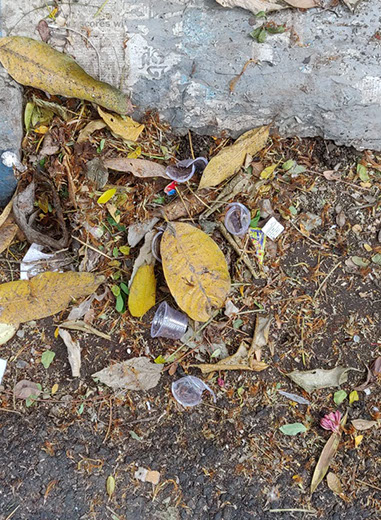
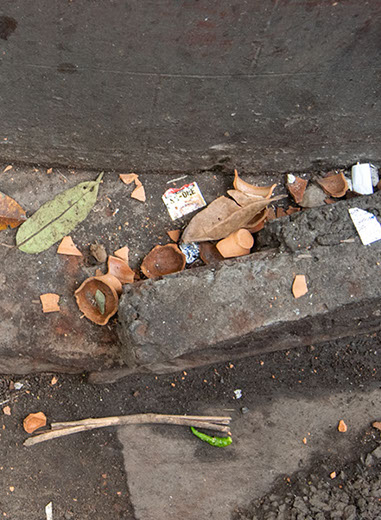
Starting point
Make India plastic free
Minister Piyush Goyal stated in 2019 that he attempts to avoid large masses of plastic waste and choses to replace teacups made of synthetic materials with traditional clay.
He introduces the clay cup as the “environment-friendly” alternative to disposable plastic cups and argues that this strategy will “help in environmental protection and will positively affect the domestic pottery industry”. He additionally highlights the importance of the cup for the Indian heritage.
Initiative
Make India waste free
The motivation behind the design project is the evaluation of the arguable sustainable deal between “no plastic” and “zero waste”. I took the initiative to complement the politician’s concept and analysed the opportunity of a circular economy to make the traditional clay cup an all-embracing and viable sustainable solution for plastic tea cups.
The challenge is to prevent waste of any kind.
Project insights
Product and material analysis
Clay Teacup
Diameter: 57 – 59 mm
Height: 43 mm
Weight: 34 gramme
Capacity: 44 ml
Material: low-fired clay
Colours: reddish-brown to yellowish to orange with greyish to purple discolourations
Ethnographic research in Kolkata, West Bengal, in 2019
The research question “how sustainable is Bhar?'' explores the ability of the terracotta cup to be a valuable alternative to plastic cups in India. The ethnographic research reveals the socio-cultural influence of the cup.
Kolkata is a location in India where the tradition has been maintained and represented with pride. The integration of the cup into everyday life and the potteries that still exist in the district are features that distinguish Kolkata from other cities in India.
Traditional pottery families make Bhars by turning the natural material clay into the small tea cups.

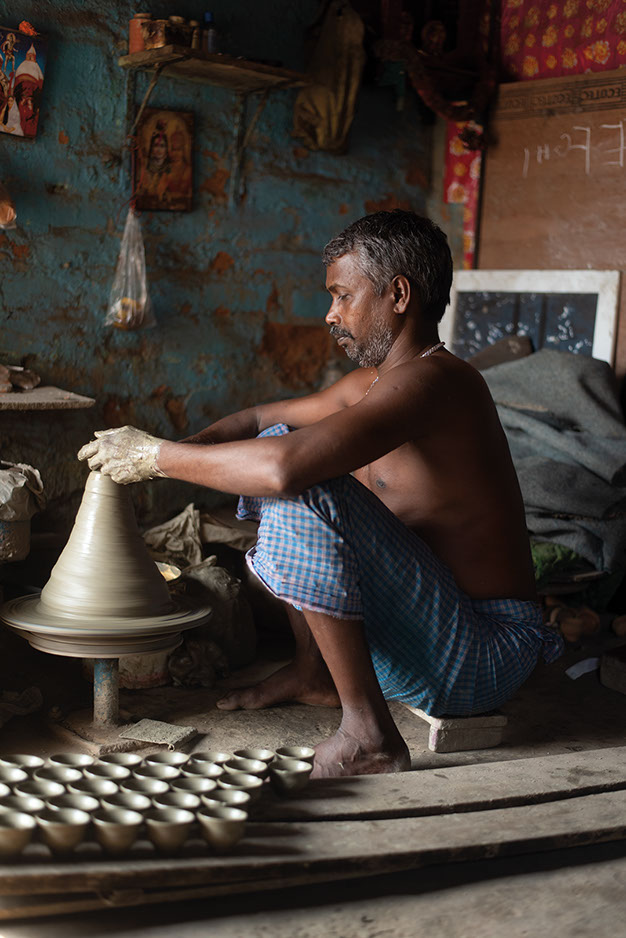
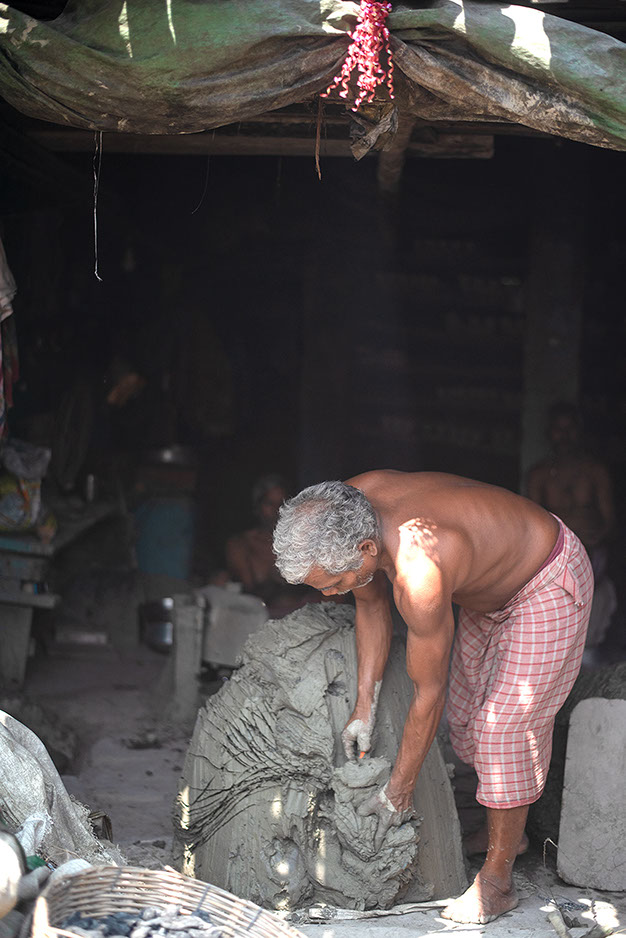
Vendors and tea drinkers celebrate the traditions and enjoy the earthen flavour that is added through wet terracotta.
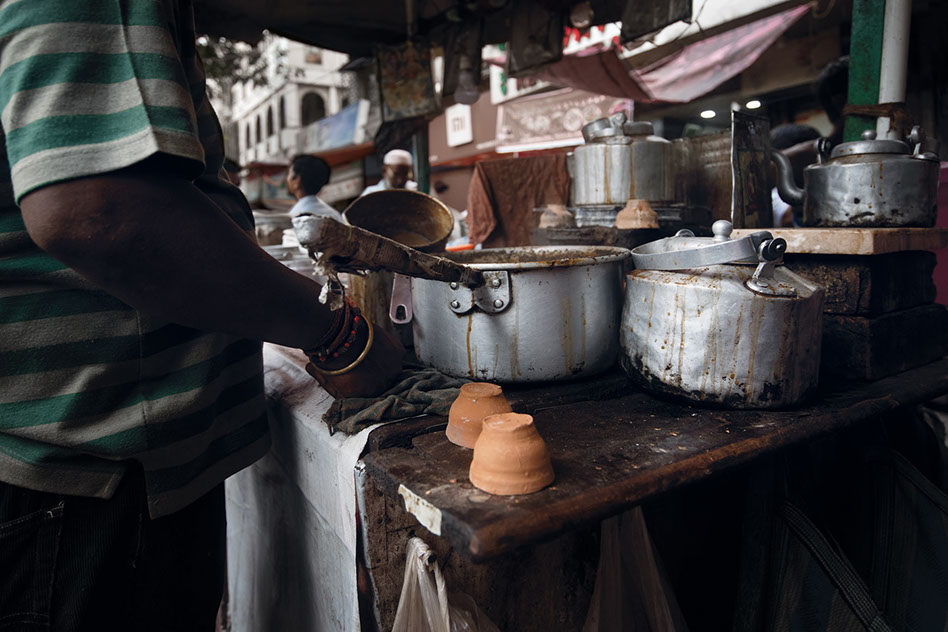


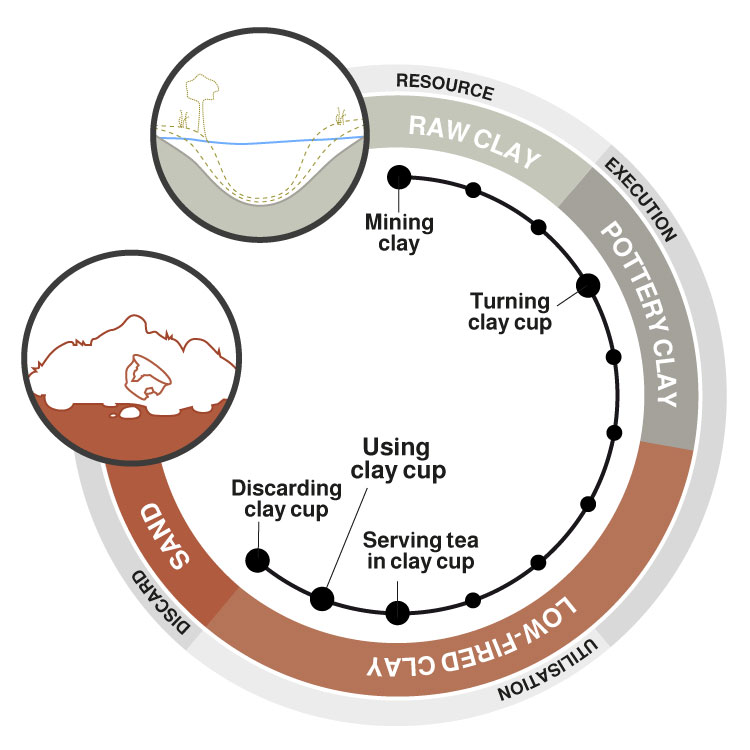
The clay cup is manufactured within two days and daily distributed to local tea vendors. The average tea drinker empties / uses the cup within 15 minutes.
Raw clay
Raw clay is wet, plastic, malleable, and muddy. The resource is originally dug up from rivers and wetlands. Some is mined from the holy river Ganges which highlights the belief in a spiritual material and a stronger symbol of Indian heritage.
Pottery clay
To prepare the raw clay for turning, the potter vigorously kneads clay with his feet to make it smooth and sort out organic inclusions.
Low-fired clay
The terracotta's structure is porous, menaing it absorbs liquids within about 10 minutes and stores those liquids until they evaporate.
Life cycle
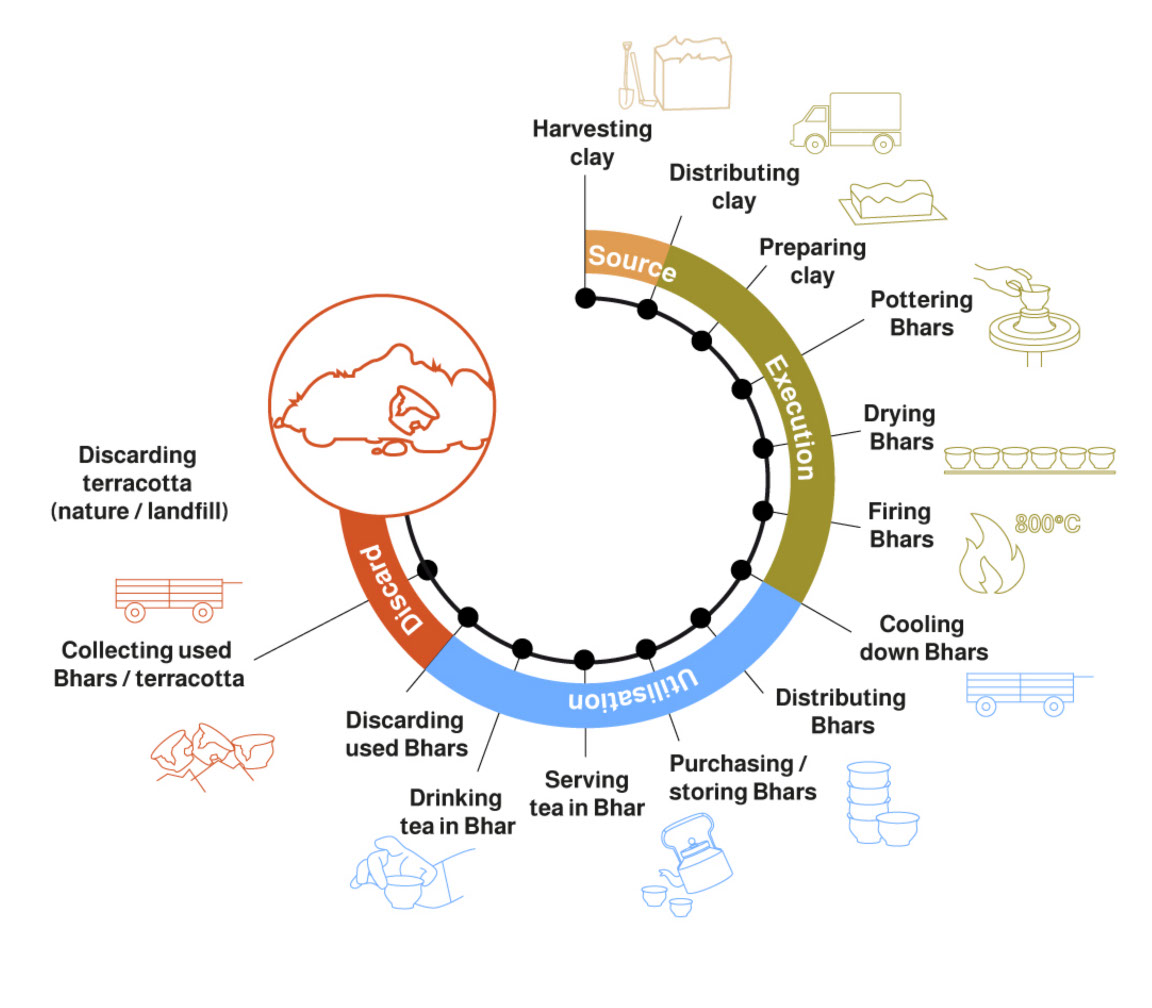
The product life cycle of the clay cup includes the 4 stages: source, execution, utilisation, and discard. The assessment diagram show 12 steps and starts with mining the raw clay. It visualises the material processing, manufacture, distribution, use, and disposal.
The supply chain of the cup is simple and transparent: each potter family distributes the cups to the nearby vendors and street sweepers take the cups to the local landfill after use.
Sand
Terracotta is generally seen as a biodegradable material, which leads to the understanding that its life cycle is closed and ends with the decomposition into sandy soil.
Tradition believes that the clay returns into soil and shows a perfect ecological model.” But from a neutral perspective of a material scientist, Bhar loses its plasticity and possibility to biodegrade back into mud during the firing process. The characteristics of clay impart a change in the material’s structure when firing above a temperature of 200 degrees Celsius. Clay changes into a ceramic material.
Therefore, it is possible for terracotta to decay into sandy soil after two years. The cups first break into shards. These shards continue to break down into smaller shards and rough sand until they have become fine sand. This sandy soil mixes with water and natural earth, which gives the appearance that the cup has completely changed back into mud.

Development of a concept to close the cup's life cycle
India faces the difficulties of low water quality, for which disposable products are necessary.
Director of the Indian Museum Kolkata, Rajes Purohit, explained, “The clay cup will always have to remain disposable as a teacup which should speak for the awareness about the harm caused by low-fired clay shards.”
Complementing Piyush Goyal’s concept, replacing plastic tea cups with the clay cup, means to manage its resources.

Reusing
Most of the discarded cups don't break due to the strong structure of terracotta. Therefore, it is scientifically possible to reuse the cups after cleaning. At a temperature of 100 degrees Celsius all organic materials are burned off and the lower temperature assures that the terracotta keeps its ceramic structure.
Recycling
The ground terracotta can be returned to the potters who can blend the new resource into the raw clay to increase the quantity and improve the quality. For example, the consistency of the clay changes during the rainy season and this makes the raw material more difficult to work with.
Another possibility would be to use the processed material by local ceramic designers.
Material and design experiments
Recycling low-fired clay
The fired ceramics is a porous material which can be easily ground into a fine sand powder.
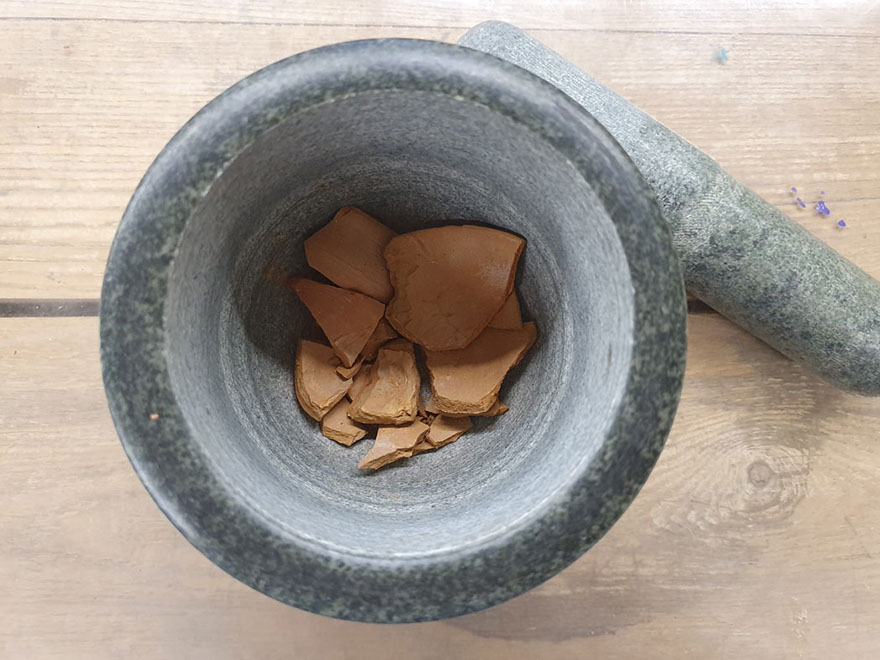
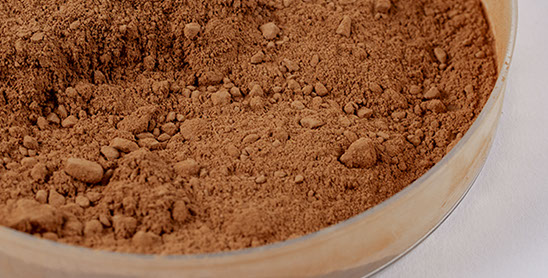
Ground low-fired clay is a red powder that can be combined with ceramic materials like slip or raw clay.
Mixing raw clay and the recycled powder effects the behaviour during firing, the quantity of the resource and the colours and texture of the final ceramic work.
The experiments show that clay cups are easy to grind into a fine sand dust that can be added to wet clay. Mixing in different proportions not only has the advantage of increasing the quantity of the raw material, but also allows for optimised strength and stability of the clay for turning and firing.
The clay mixture can be processed traditionally and has the same properties that make the cup a cultural good.
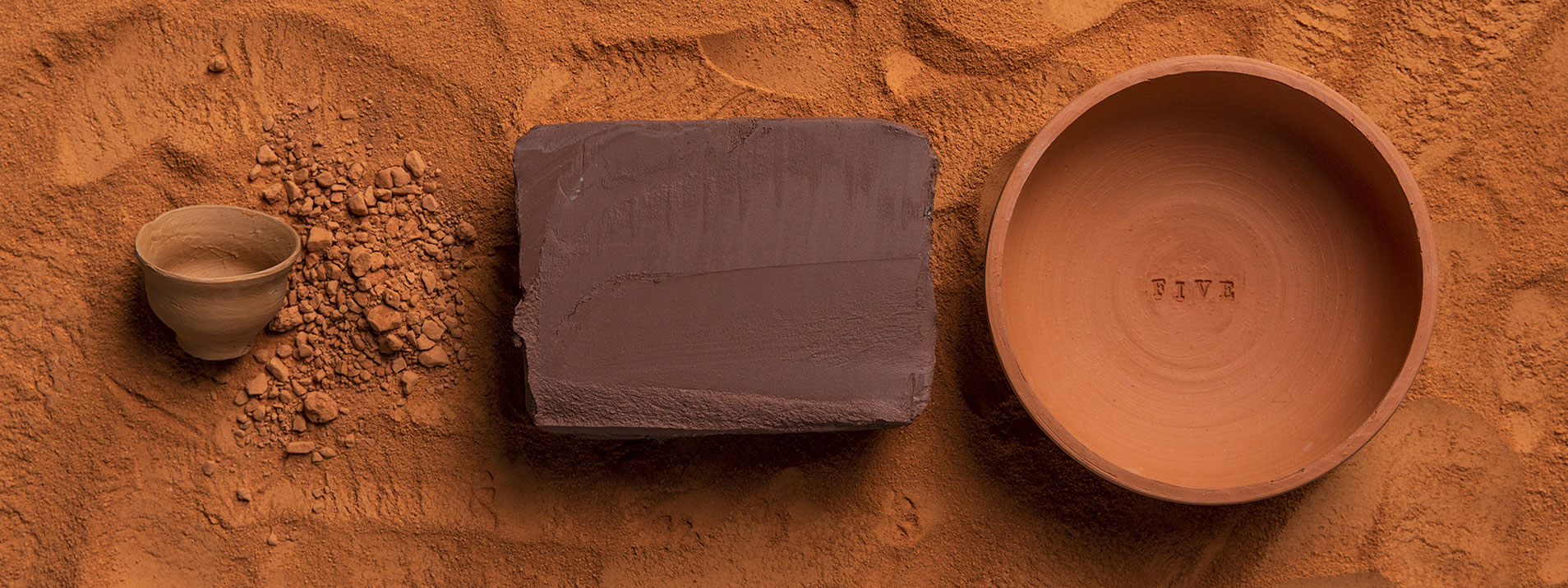
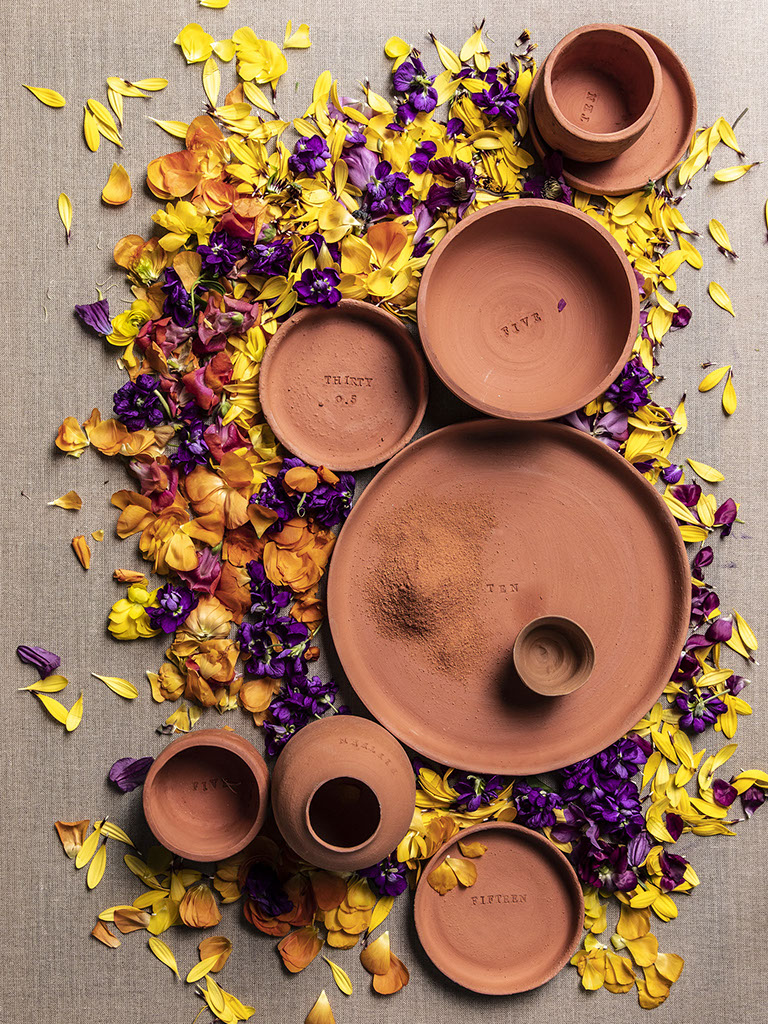
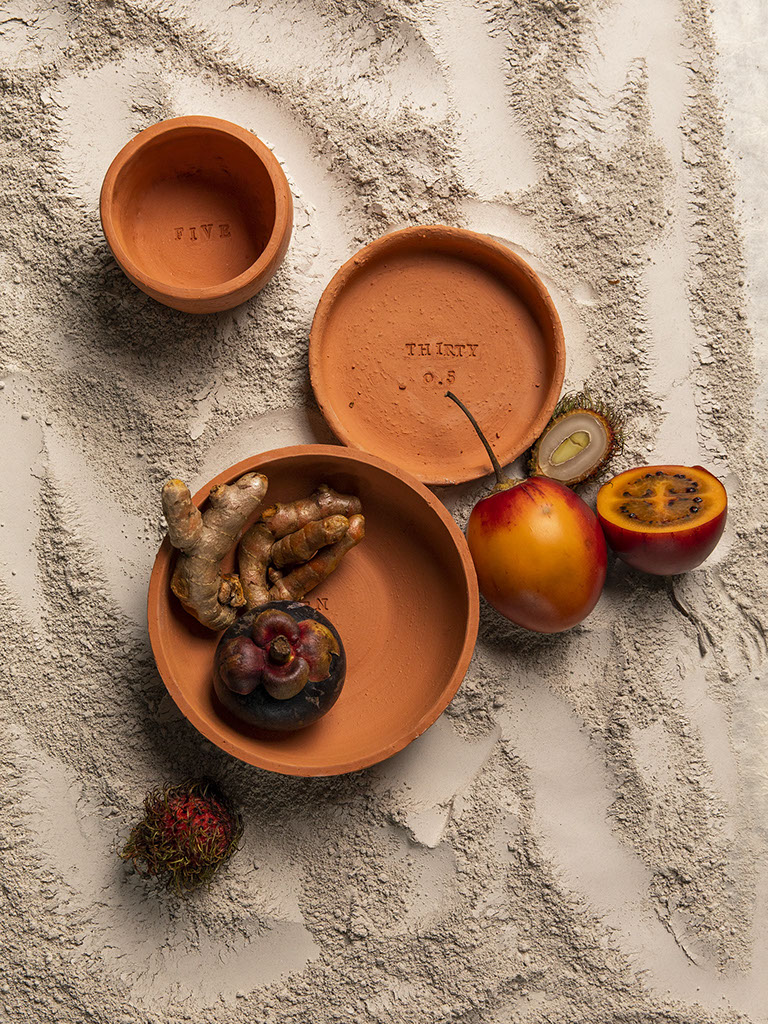
Economic opportunity
The politician’s demand is to produce a daily amount of 5,000,000 Bhars to replace plastic tea cups in India.
5,000,000 cups (34 gramm per cup) = ~ 170 tonnes of terracotta.
Recycling terracotta and selling it as red clay flour on the German market for the current price of approximately 69 € per 100 kilogramm would raise:
117,300,000 € per day or 42.814.500.000 € per year
Sustainable Bhar is a design project derived from the findings of the research project How Sustainable Is Bhar. Find more information and the research report A Journey To Sustainability Thinking »
Research on a recent approach to preventing plastic waste in India replacing plastic tea cups with the traditional cups made from terracotta:
Ethnographic research in Kolkata based on interviews, user surveys and observations.
Product and material evaluation of the traditional tea cup based on product analysis, life cycle assessment, ecological footprint and material flow analysis.
Information about the research and outcome in an interview
▲TOP

© All rights reserved, Hanne Viehmann 2022, Impressum
